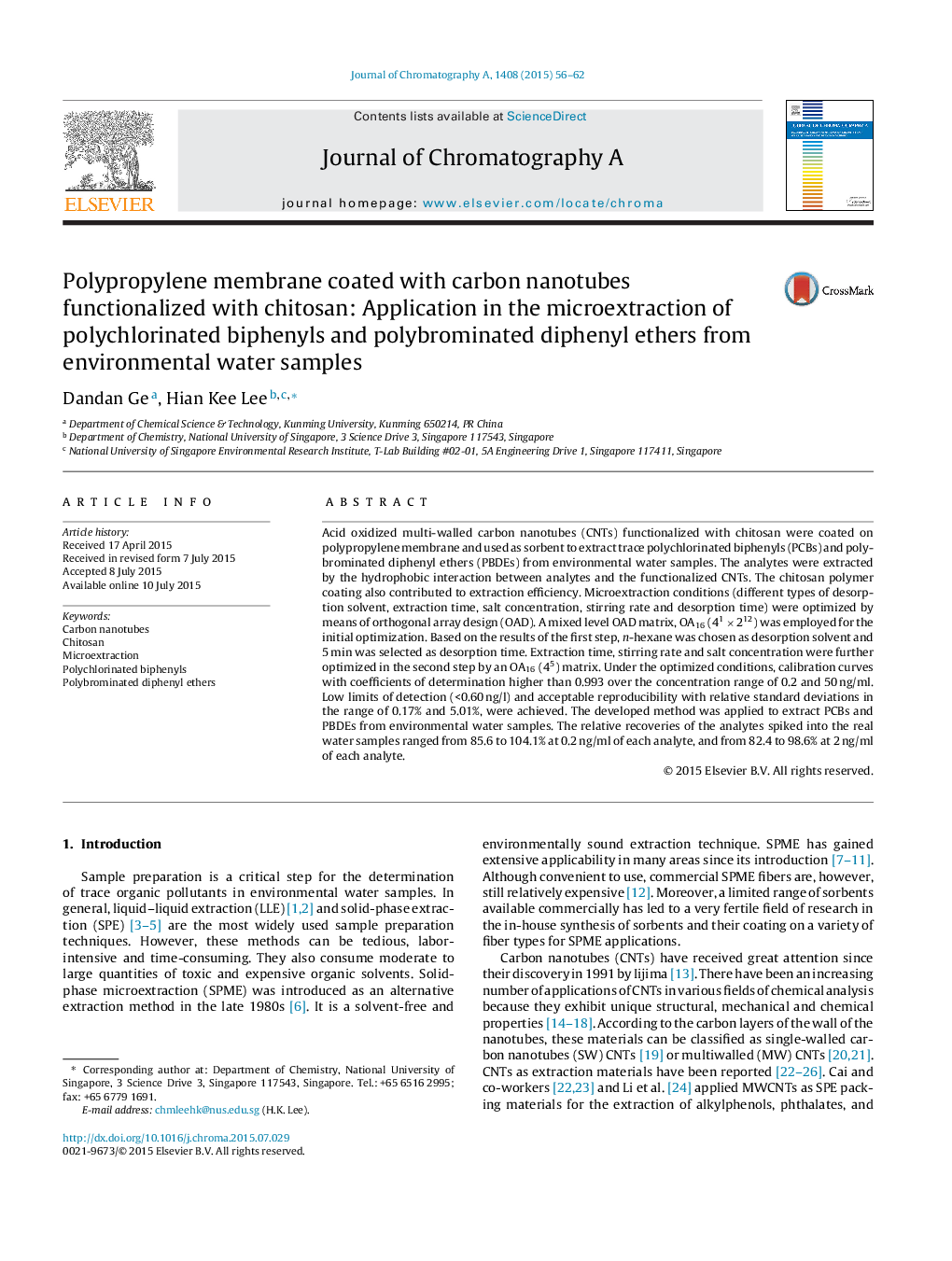| Article ID | Journal | Published Year | Pages | File Type |
|---|---|---|---|---|
| 7611591 | Journal of Chromatography A | 2015 | 7 Pages |
Abstract
Acid oxidized multi-walled carbon nanotubes (CNTs) functionalized with chitosan were coated on polypropylene membrane and used as sorbent to extract trace polychlorinated biphenyls (PCBs) and polybrominated diphenyl ethers (PBDEs) from environmental water samples. The analytes were extracted by the hydrophobic interaction between analytes and the functionalized CNTs. The chitosan polymer coating also contributed to extraction efficiency. Microextraction conditions (different types of desorption solvent, extraction time, salt concentration, stirring rate and desorption time) were optimized by means of orthogonal array design (OAD). A mixed level OAD matrix, OA16 (41Â ÃÂ 212) was employed for the initial optimization. Based on the results of the first step, n-hexane was chosen as desorption solvent and 5Â min was selected as desorption time. Extraction time, stirring rate and salt concentration were further optimized in the second step by an OA16 (45) matrix. Under the optimized conditions, calibration curves with coefficients of determination higher than 0.993 over the concentration range of 0.2 and 50Â ng/ml. Low limits of detection (<0.60Â ng/l) and acceptable reproducibility with relative standard deviations in the range of 0.17% and 5.01%, were achieved. The developed method was applied to extract PCBs and PBDEs from environmental water samples. The relative recoveries of the analytes spiked into the real water samples ranged from 85.6 to 104.1% at 0.2Â ng/ml of each analyte, and from 82.4 to 98.6% at 2Â ng/ml of each analyte.
Keywords
Related Topics
Physical Sciences and Engineering
Chemistry
Analytical Chemistry
Authors
Dandan Ge, Hian Kee Lee,
